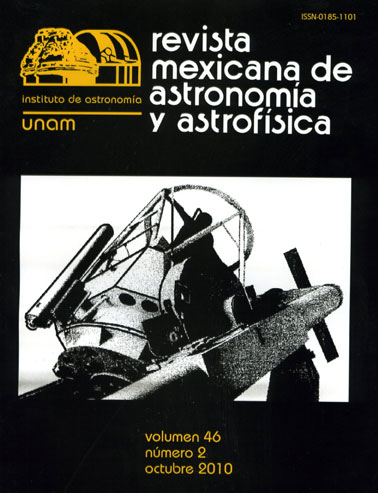The importance of nucleus rotation in determining the largest grains ejected from comets
Contenido principal del artículo
Resumen
Se determina el valor máximo del diámetro de las partículas eyectadas de los núcleos cometarios haciendo uso del modelo clásico de expansión radial de los gases de los cometas. Se destaca la importancia de las fuerzas inerciales, principalmente de las debidas a la rotación del cometa. Se muestra una sencilla expresión indicando el valor mínimo que debe tener el periodo de rotación del cometa para que la partícula pueda levantarse de la superficie. Los resultados obtenidos son comparados con los valores determinados a partir de medidas de radar. También se analiza el cometa Churyumov-Gerasimenko, que alcanzará la misión ROSETTA en 2014, proponiendo valores para los diámetros de las mayores partículas que pueden desprenderse del cometa.
Detalles del artículo
Cómo citar
Molina, A. (2010). The importance of nucleus rotation in determining the largest grains ejected from comets. Revista Mexicana De Astronomía Y Astrofísica, 46(2). Recuperado a partir de https://journals.unam.mx/index.php/revmexaa/article/view/20582

